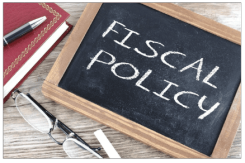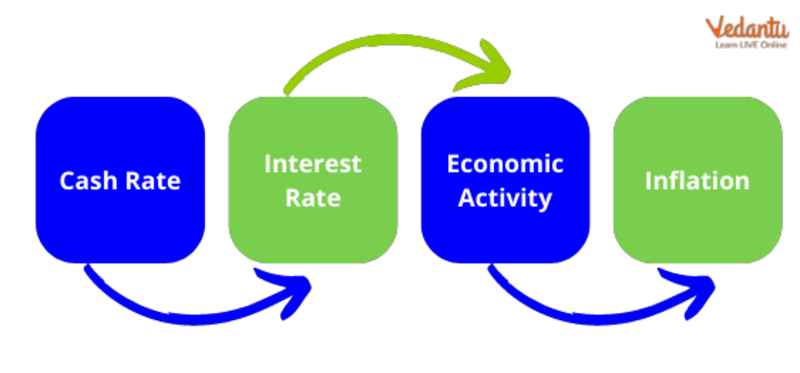




Role of Government in Economy
Government Economics introduces you to the field of government and economics, a new area aimed at better understanding the role and behaviour of governments in the economy. Government intervention in the economy is inevitable as certain roles and responsibilities cannot be assumed by the private sector. Governments are meant to guide and direct the pace of economic activity in the country. It also needs to ensure stable growth, high employment, and price stability. Additionally, governments need to adjust tax rates and spending so that economic growth can either accelerate or slow down.
The government's invisible hand in the economy becomes apparent when governments intervene to correct identified deficiencies in market mechanisms. Governments keep private companies out by owning and operating certain companies, such as the military. The impact of government policies on business is positive on the note that it regulates businesses such as telephone companies, imposes taxes on citizens, and distributes profits to citizens. The role of government in the economy also includes the use of fiscal and monetary power to promote economic growth and development to adjust business cycles as needed also comes under the role of government.
Fiscal Functions of Government
Modern economists believe that government has three fiscal functions:
Allocation Function
Distribution Function
Stabilisation Function
Allocation Function: In a market economy, the allocation of production resources is generally made by the market mechanism to the price mechanism, which is not always optimal. Governments use their fiscal policies to optimise the desired allocation of productive resources or the allocation among different products. A pricing mechanism is a system in which the allocation of resources among various goods and services is based on relative market prices. Market mechanisms generally fail to achieve the desired results. Governments must intervene in the market through fiscal policy to achieve desired production, consumption, and distribution levels. Governments use tax policies, subsidy programs, regulations, restrictions, and licensing policies to achieve desired results. Through policies, the government allocates the resources necessary for the proper development of the economy.
Distributive Function: Due to monopoly inheritance laws, the market and price mechanisms cannot equitably distribute wealth and income. Because the welfare state is responsible for reducing economic inequality, the government seeks to reduce large economic inequalities through taxation. It uses progressive taxation, subsidies, transfer payments, public distribution systems, and many welfare programs for the poor to reduce economic and wealth inequality.
Stabilising Function: The nature of the market economy creates trading and price cycles. These cycles make the economy unstable and uncomfortable. Therefore, the government must reduce economic instability and stabilise the economy more and more. Governments use tax policies, fee policies, spending policies, fiscal deficits, public borrowing, etc. to control economic fluctuations in the economy.
Economic Policies
To ensure strong economic growth, there are two main economic policies through which the government may respond to economic activity.
Fiscal Policy
Monetary Policy

Fiscal Policy
Fiscal policy
Governments can also issue policies to adjust spending, change tax rates, or introduce tax incentives. When it comes to government budgets, governments decide whether to spend more than they plan to raise. This process of assessing public spending aims to promote economic prosperity or cool an overheated economy. Instead of focusing on how the government spends money, general fiscal policy is about how the government raises money. Offering tax incentives, additional tax credits, or tax relief relieves the financial burden on citizens and promotes economic growth. Repeal of favourable tax laws and tax increases slow down economic activity.
Monetary Policy
One of the most common ways governments influence a country's economic activity is by adjusting borrowing costs. Most often, this is done by lowering or raising the Federal Funds Rate, the target interest rate that affects short-term interest rates on debt such as consumer loans and credit cards. The Federal Reserve raises the federal funds rate to curb economic growth and lowers the federal funds rate to boost economic growth. Another form of monetary policy is the buying and selling of government securities by the Federal Reserve. When the Federal Reserve buys securities from a bank, it injects money into that bank to increase the money supply. Alternatively, you can sell your stocks to eliminate cash and reduce the money supply.

Monetary Policy
Impact of Government Policies on Business
The government sets many policies that guide businesses. The impact of government policies on business is highlighted below:
Governments can make tax policy changes that lead to changes in taxes, trade, subsidies, regulations, interest rates, licences, etc. Organisations must be flexible enough to accommodate changing rules and policies.
Government policies can affect the taxes communities pay, pensions, immigration status and laws, penalties for breaking the rules, the education system, trade and commerce in the economy.
Governments implement policies that change social behaviour in the business environment. Governments can make agreements to develop new technologies that bring about the necessary changes.
Declining private investment reduces the production of goods and services. This, in turn, could lead to job cuts. Government policies can affect interest rates, and higher interest rates increase borrowing costs.
Case Study
State the main objectives of Fiscal policy in India.
Ans: Fiscal policy in India is the driving force that helps determine how much money the government spends to support economic activity and how much income it collects from the system to keep the wheels of the economy spinning. In recent years, the importance of fiscal policy has increased to realise rapid economic growth in India and worldwide. The objectives are listed below:
Achieving rapid economic growth is one of the key fiscal policy objectives the Government of India set. Fiscal policy, along with monetary policy, plays an important role in managing a country's economy.
A country's government steers the economy through fiscal policy by controlling the flow of tax revenue and public spending. A government is in surplus if it receives more income than it spends and a deficit if it spends more than tax and non-tax income.
Summary
The government's invisible hand in the economy becomes apparent when governments intervene to correct identified deficiencies in market mechanisms. Governments keep private companies out by owning and operating certain companies, such as the military. Governments can influence the economy's performance through combined monetary and fiscal policies. Monetary policy refers to central banks' actions to influence the amount of money and credit in the economy. In contrast, fiscal policy refers to government decisions regarding taxes and spending. These two policy areas affect the economy through different mechanisms.
FAQs on The Role of Government in the Economy
1. What is the fundamental role of the government in an economy?
The government's fundamental role is to guide and regulate the economy to ensure stable growth, high employment, and price stability. It intervenes to correct market failures, provide public goods and services like defence and infrastructure that the private sector won't, and establish a legal framework for businesses to operate within.
2. What are the three main fiscal functions of the government?
The three main fiscal functions of the government, as identified by modern economists, are:
- Allocation Function: To allocate resources for the provision of public goods and services and to influence production in desired sectors through taxes and subsidies.
- Distribution Function: To reduce income and wealth inequality through progressive taxation and social welfare programs.
- Stabilisation Function: To control economic fluctuations like inflation or recession by using fiscal policy to maintain economic stability and growth.
3. What is the difference between fiscal policy and monetary policy?
Fiscal policy refers to the government's use of its budget, specifically through taxation and public spending, to influence the economy. It is managed by the government itself. In contrast, monetary policy is managed by the country's central bank (like the RBI in India) and involves controlling the money supply and interest rates to achieve economic goals like controlling inflation.
4. How does the government use fiscal policy to influence the economy?
The government uses three main tools of fiscal policy to influence the economy:
- Government Spending: Increasing spending on infrastructure, healthcare, or defence can boost economic demand and create jobs.
- Taxation: Lowering taxes increases disposable income for consumers and profits for businesses, encouraging spending and investment. Raising taxes has the opposite effect.
- Transfer Payments: Payments like unemployment benefits or social security increase the income of recipients, thereby stimulating consumption.
5. What role does the Reserve Bank of India (RBI) play in managing the country's economy?
As India's central bank, the Reserve Bank of India (RBI) is responsible for implementing monetary policy. It directs the economy by adjusting key interest rates (like the repo rate), managing the money supply, and regulating the banking system. The primary goal is to maintain price stability (control inflation) while supporting sustainable economic growth.
6. How do government policies on taxation directly impact a business's operations?
Government tax policies directly affect businesses in several ways. An increase in corporate taxes reduces a company's post-tax profits, leaving less money for reinvestment or expansion. Conversely, tax incentives or credits for specific activities, like research and development, can encourage investment in those areas. Changes in indirect taxes, like GST, can affect the final price of goods, influencing consumer demand and a company's sales volume.
7. Why is government intervention necessary if the market mechanism already exists?
Government intervention is necessary because the market mechanism, while efficient in many ways, has significant limitations. It often fails to provide essential public goods (like national defence), address negative externalities (like pollution), or ensure an equitable distribution of wealth. The government steps in to correct these market failures and promote social welfare, which the profit-driven private sector might ignore.
8. What is the key difference between the government's allocation and distribution functions?
The key difference lies in their primary goal. The allocation function is concerned with *what* is produced; it directs national resources towards specific sectors or public goods (e.g., funding space research vs. building highways). The distribution function, on the other hand, is concerned with *who* gets the economic benefits; it aims to create a fairer society by redistributing income from the wealthy to the poor through tools like progressive taxes and subsidies.
9. What are the potential consequences if a government consistently spends more than it earns?
When a government consistently spends more than its revenue, it runs a fiscal deficit, which must be financed by borrowing. While short-term deficit spending can stimulate a weak economy, persistent high deficits can lead to several negative consequences, including a growing national debt, higher interest rates for everyone, and the risk of inflation as the money supply increases to finance the debt.
10. How does the government work to promote long-term economic development?
The government promotes long-term economic development by creating a stable and predictable economic environment. This includes investing in physical infrastructure (roads, ports), human capital (education, healthcare), and technology. It also enacts policies that encourage private investment, protect property rights, and ensure a stable legal and financial system, all of which are crucial for sustainable growth.





















